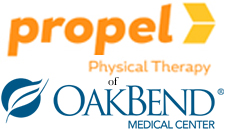Post-run Recovery
by Meredith Kennedy, PT, DPT
Are you running in the Houston Marathon? You’ve been training for a long time and you’re prepared for the race, but are you prepared for the next phase? Do you know how to recover safely and effectively after the race? Here are some tips!
First let’s understand what happens during the race. Due to the repetitive action of running for 26.2 miles, your muscles take on a lot of stress and trauma. This causes micro trauma at a cellular level to muscle fibers in the legs. This micro trauma, if left alone, can cause localized swelling and toxin build up which can lead to pain and dysfunction.
The first step is to celebrate crossing that finish line!! You have accomplished a great feat and deserve a big Congratulations! Maybe indulge in a free beer or your favorite post-run refreshment.
Following the race it’s important to allow time for your muscles to heal and recover. It is ideal to avoid running for about 2 weeks in order to prevent continued stress to the muscles. Instead of running, try swimming, cycling, or even walking, but avoid being completely sedentary during this rest phase. Another key is to continue to hydrate and maintain your nutrition. As your body is healing, you need all your good nutrients to help.
Many people have questions in regards to deep tissue massages, foam rolling, cryotherapy, stretching, etc. An important thing to remember is what you’re putting your muscles through. Anything that will continue to stress or damage muscle tissue should be avoided. Deep tissue massages and foam rolling both put compressive forces on the muscles and can cause further damage to the soft tissues; however, a gentle massage focusing on improving circulation can be beneficial. Cryotherapy treatments including cold baths, cryochambers, and ice can be used to help flush the body of unwanted toxins. After a day or two of ice, consider hot-cold contrast baths to improve blood flow and lymphatic drainage. Lastly, gentle stretching is great to continue, but be careful to avoid overstretching.

